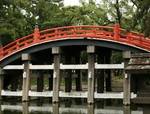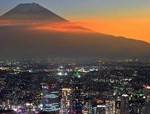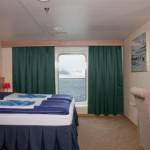Nepal travel
Sandwiched between India and China, home to eight of the world’s ten highest mountains (including Mt. Everest ), birthplace of the Buddha and a long time favourite of the global trekking community. Protected by the Himalayas, you can find ethnic cultures untouched by modernity, vast tracts of virgin forest land and a degree of bio-diversity unknown elsewhere.
The beauty power of this mythical kingdom touches hearts and is more impressive when explored around. Whether you take a night tour around the tiny valley or take an eight day trip within the capital and country side – the views, terraces, villages and the experience of local lifestyle are unparalleled. Touring around during April and May brings the deep reds and oranges of the rhododendron blossoms. An unspoiled country with majestic mountains imbued with a certain mystique, a unique cultural heritage preserved intact with the continuity of many centuries, an architectural style like no other, a land of full of warm hearted and friendly people.
Heartily welcome to roof of the world and land of Shangri-La. Nepal, the legendary mountain kingdom of the Himalayas lie wedged between two Asian giants – India and China. This small Himalayan nation is bestowed by nature with an incredible diversity in topography resulting in a wide range of flora and fauna. The elevation of the country ranges from 70 meters above sea level to the highest point on earth, Mt. Everest at 8,848 meters, all within a distance of 150 kilometres resulting in sub-tropical climate to Arctic-like climate.
Nepal occupying only 0.1% of the earth has massive Himalayan region in the north to the sweltering sub-tropical jungles of the terai (plains) in the south, and is home to:
– 2% of all the flowering plants in the world
– 8% of the world’s population of birds (more than 848 species)
– 4% of mammals on earth
– 11 of the world’s 15 families of butterflies (more than 500 species)
– 600 indigenous plant families
– 8 of the 14 high mountains (above 8000m) of the world
– 319 species of exotic orchids
– 167 species of mammals
Nepal travel quick facts :
Area: 147,181 sq. kilometers
Geography: Situated between China in the north and India in the south
Capital: Kathmandu
Population:25 million
Language: Nepali is the national language. However, travel-trade people understand and speak English as well.
Currency: Nepali Rupee (approximately US$ 1 equals Rs. 74.00)
Political System: Federal Democratic Republic
Religion: Characteristic of being the only Hindu country in the world. However, there is a harmonious blending of Hinduism, Buddhism, Christian and Islam.
Climate: Nepal has four major seasons:
- Winter: December-February
- Spring: March-May
- Summer: June-August
- Autumn: September-November
Best time to visit Nepal
- Autumn (September, October, and November)
- Spring(March, April and May) are the best seasons for high altitudes and climbing activities.
- Winter (December, January and February) are good months for low altitude treks and tours.
- Monsoon (June, July and August) is also okay to visit Nepal but visibility could be of matter due to rain.
Nepal travel accommodation
Nepal today has altogether more than 300 big and small hotels which are registered with the Department of Tourism, ranging from 5 star deluxe categories to the small one star and tourist standard hotels. A general outline of facilities available in five, four and three star hotels
Nepal today has altogether more than 300 big and small hotels which are registered with the Department of Tourism, ranging from 5 star deluxe categories to the small one star and tourist standard hotels. A general outline of facilities available in five, four and three star hotels are given below:
Five Star Hotels:
A five star hotel has all its rooms air-conditioned, well furnished and with attached bath. More than two restaurants and bars serving a variety of cuisine and drinks, swimming pool, tennis court, beauty parlour, sauna, health club. Banquet and conference facilities and a variety of other modern luxurious facilities are also available.
Four Star Hotels:
The four star hotels in Kathmandu constitute of air-conditioned, well furnished room with attached bath, more than one restaurant, garden, banquet and conference facilities – though in a slightly smaller scale..
Three Star Hotels:
The three star hotels have air-conditioned rooms with attached bath and standard furnishings. A minimum of one restaurant and bar are available with standard luxury
Nepal travel climate
The seasons in Nepal are pretty much the same as in Europe, opposite of the Australian seasons. In January it’s cold, while in July you could make do with shorts and t-shirt. The climate of Nepal is moderate which means the winters are dry and the summers are hot. But because of the huge range in altitude and landscape, climate of Nepal differs significantly throughout the country.
Monsoon is approximately from the end of June to end of August. About 80 per cent of the rain falls during that period throughout the country but the remainder of the year is dry. Spring (March to May) and autumn (September to November) are the most pleasant seasons. Winter (December, January, and February) temperatures drop to freezing with a high level of snowfall in the high mountains.
Summer, monsoon and late spring temperatures range from 28ºC (83ºF) in the hill regions to more than 40ºC (104ºF) in the Terai (southern plains). In winter, average maximum and minimum temperatures in the Terai range from a brisk 7ºC (45ºF) to a mild 23ºC (74ºF). The central valleys experience a minimum temperature but not often falling bellow freezing point and a chilly 12ºC (54ºF) maximum.
The Kathmandu Valley has a mild climate most of the year, situated at an altitude of 4,297ft (1,310m). Summer temperatures range from 67-81°F (19-27°C), and in winter temperatures are between 36 and 68°F (2-20°C). During the rainy monsoon season between June and August, there is an average rainfall of between 7.8-14.7 inches (200-375mm) in Kathmandu. May and June can be very hot and humid until the monsoon rains bring relief. In spring (March to April) and autumn (October to November) the temperatures are pleasant with occasional short bursts of rain, while November to February are dry, but can be very cold, especially at night.
Nepal travel best time to visit:
Most recommended seasons for trekking are autumn (Sept, Oct, Nov) and spring (March, April, May). In these seasons you will be rewarded by good weather, sunny and warm with clear sky and outstanding views. During monsoon (June, July, Aug) although there will be no problem for trekking, the issue could be of less visibility and rain. But, for a keen botanist, monsoon is blessing as the higher valleys, mountains and meadows blossom with flowers and abundant vegetation. You can trek in winter (Dec, Jan, Feb) also, only the issue is cold weather with snow-fall at higher elevations.
The trekking routes are crowded during spring and autumn but during monsoon and winter the routes are not packed and you could enjoy rather best of nature.
However, because of effects of global warming the climate is changing world wide and there could always be possibility of exception in these weather patterns. In best seasons also there could be hoax of bad weather and sometimes even in adverse months; weather tends to be excellent for trekkers.











